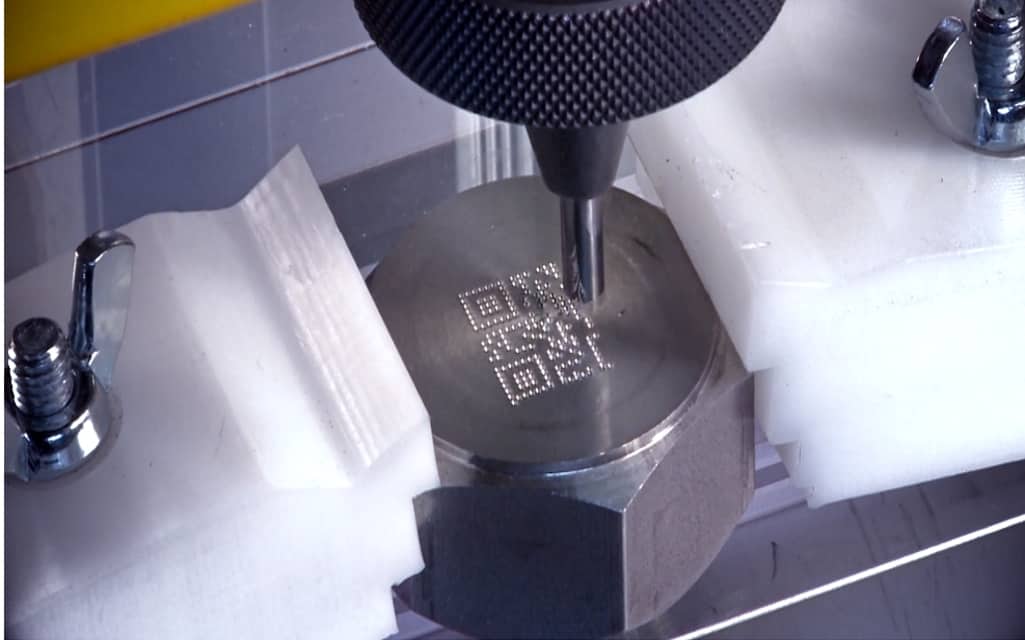There are several marking methods, but dot peen marking is a popular choice.
To see where I’m coming from, we shall look at some of the other permanent marking methods and then compare their benefits against dot peen technology.
Dot Peen Vs. Hand Stamping
Hand stamping is the manual way of creating signs on metal using steel die and hammer. Unlike dot peen technology, hand stamping is an automatic process that relies on human precision, and therefore more prone to errors if insufficient caution is employed by the user.
Here are some of the differences when compared to dot peen technology;
- Dot peen is an automated process, carried out by machine quickly, while hand stamping is time-consuming as it’s a manual method.
- Dot peening can be programmed to design sophisticated logos and signs, while the hand stamping is limited to punching alphabetical symbols or numbers.
- Dot peen is automated, or rather uses a machine, thus reducing probable error. This is contrary to hand stamping, which is done manually as is prone to mistakes.
- Dot peen machines are safe to use, unlike the hand stamping method, which can result in injuries.
Dot Peen Marking Machine vs. Laser Marking Machine
Laser technology, like the name, suggests, use laser beams to create signs and patterns.
Designs from a laser are as a result of the beam burning off material from the surface, resulting in a change.
Sure, a laser is tied to a more precise marking, but it has several disadvantages over dot peen.
- For starters, laser marking generates copious amounts of heat and fumes, which can be quite unpleasant to the user.
- Secondly, dot peen industrial marking systems are known to produce deeper marks on the metal than laser.
- Dot peen technology creates clear indents on irregular surfaces better than the laser marking machines.
- If you are working on a dirty or wet surface, a laser machine yields erratic lines. By contrast, dot peen will create clear signs, regardless of the surface.
Dot Peen Vs. Chemical Etching
Chemical etching utilizes chemical substances called etchants to make permanent metal markings.
Etchants work by removing parts of the surface that you apply to it to form visible marks.
Here are some of the disadvantages of chemical etching, over dot marking.
- Chemical etching uses a lot of consumables, making it quite expensive. This is contrary to dot peen, which only uses the carbide pin.
- Chemical etching is time-consuming and a hassle to perform as it’s a multi-stage process. This is contrary to dot peen, which is quite a straightforward process.
- With chemical etching, you deal with hazardous chemical elements, which are a threat to your health. Dot peen does not use any chemicals, so it does not pose any health threats.
- While you can use dot peen on any material, chemical etching is only ideal for materials that the etchant reacts with
By now, it should be clear that dot peen industrial marking systems are a superior marking methods in many ways and the perfect solution for those looking for permanent marking needs.



